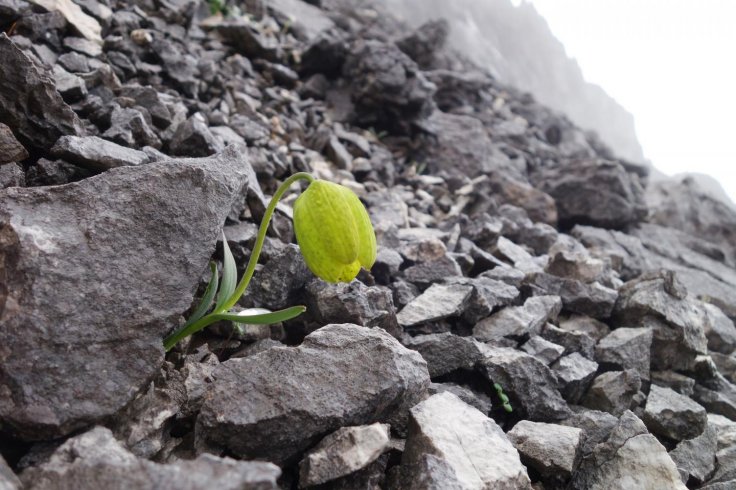Plants are known to evolve to protect themselves from herbivores that depend on them for their sustenance. That is evolution; that is nature. However, scientists have found evidence that plants may probably be evolving to hide from human beings who harvest them as well.
According to a study by the University of Exeter and the Kunming Institute of Botany (Chinese Academy of Sciences), a medicinal plant Fritillaria delavayi, which grows on the rocky terrain of the Hengduan mountains in China, have evolved to match their surroundings or camouflage, especially in the area where they are extensively harvested by human beings.
"It's remarkable to see how humans can have such a direct and dramatic impact on the coloration of wild organisms, not just on their survival but on their evolution itself," said Prof. Martin Stevens, corresponding author of the study, in a statement.
Camouflage—A Tool for Survival

Fritillaria delavayi is a perennial herb that can live for over two years. The coloration of its leaves can vary from brown to green to grey at a young age. It produces only a single flower every year after their fifth year. Fritillary species are known for their bulbs that have been used in Chinese medicine for over 2,000 years. Its rising commercial value in recent years has served as a factor for its increased harvesting.
Much like how several species of animals such as chameleons and octopuses have evolved to hide from predators, various species of flora have also adapted to protect themselves from animals that consume them.
Plants such as Monotropsis odorata (also called sweet pinesap) and Corydalis hemidicentraI, a herb, are known to blend with their surroundings to evade predators such as grazing animals and insects. However, so far, no concealing mechanisms developed by plants have been attributed to human interference.
Hiding from Human Eyes

For the study, the authors examined the closeness with which different populations of plants matched their rocky and mountainous environment, and evaluated the ease with which they could be collected. In order to gauge the level of harvesting that occurred in separated locations, the scientists conducted discussions with the people of the region.
Interestingly, it was discovered that the level of camouflage developed by the plants had a correlation with levels of harvesting. Through a computed experiment, the authors learnt that plants that possessed better camouflage took longer to be found by people.
"Like other camouflaged plants we have studied, we thought the evolution of camouflage of this fritillary had been driven by herbivores, but we didn't find such animals. Then we realized humans could be the reason," expressed Dr. Yang Niu, co-author of the study.
Being Driven to Evolve By Man

Therefore, the case of Fritillaria delavayi providence strong evidence to support the theory that humans have "driven" the species to evolve with new camouflaging colors to the odds of survival in their favor.
Prof. Hang Sun, corresponding author of the study, stated that commercial harvesting is a larger selection pressure than most evolutionary pressures found in nature. "The current biodiversity status on the earth is shaped by both nature and by ourselves," he added.
"Many plants seem to use camouflage to hide from herbivores that may eat them – but here we see camouflage evolving in response to human collectors. It's possible that humans have driven evolution of defensive strategies in other plant species, but surprisingly little research has examined this," noted Prof. Stevens.









